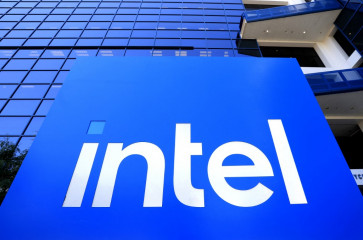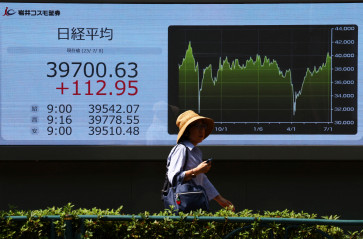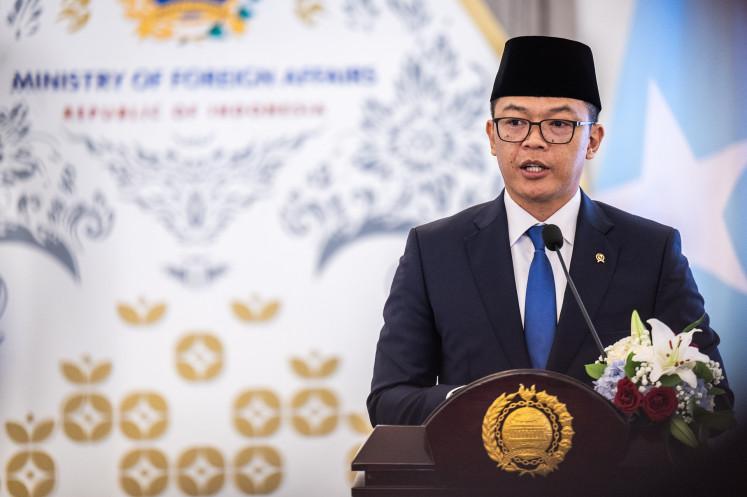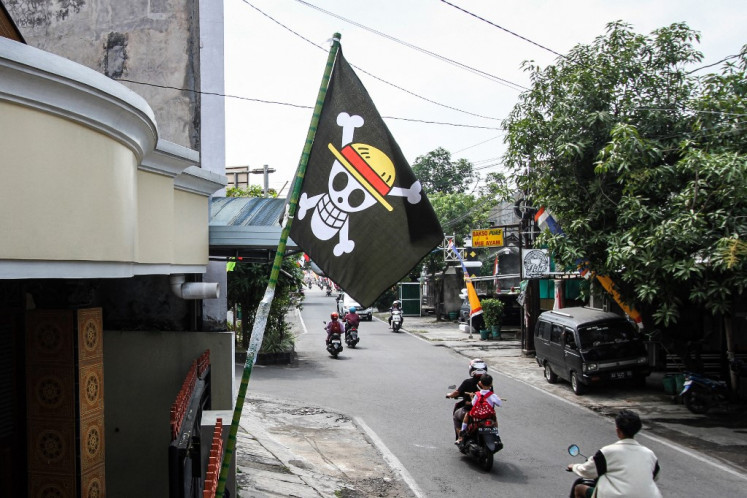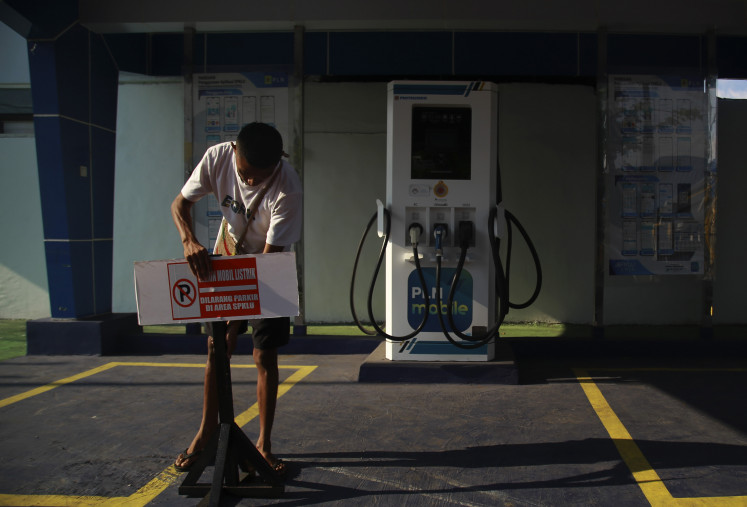Popular Reads
Top Results
Can't find what you're looking for?
View all search resultsPopular Reads
Top Results
Can't find what you're looking for?
View all search resultsSubsidized fuel consumption surpasses quota
State oil and gas firm PT Pertamina announced over the weekend that the quotas for subsidized Premium and diesel fuels have been exceeded by 1
Change text size
Gift Premium Articles
to Anyone
S
tate oil and gas firm PT Pertamina announced over the weekend that the quotas for subsidized Premium and diesel fuels have been exceeded by 1.3 percent and 0.5 percent, respectively.
As of Dec. 22, three days before Christmas Day, the consumption of Premium had reached 24.82 million kiloliters (Kl), surpassing the quota of 24.5 million Kl as determined by the revised 2011 state revenues and expenditures budget.
The quota excess hit its highest point in Jakarta, which touched 5.8 percent of the quota, with Banten using 4.5 percent, West Java 3.1 percent and Central Java 1.4 percent. In North Maluku and Papua, two provinces with the lowest absorption of subsidized fuels, consumption levels reached 96.9 percent and 96.6 percent, respectively.
The consumption of subsidized diesel fuel also surpassed its quota of 14.06 million Kl, reaching 12.13 million Kl.
Higher quota excesses occurred in Banten, which exceeded the quota by 3.9 percent, followed by East Nusa Tenggara at 2.9 percent excess, North Maluku with 2.9 percent, Bengkulu with 2.5 percent and Central Kalimantan with 2.3 percent.
Despite the quota excesses, Pertamina promised it would keep distributing subsidized fuel to prevent chaos and maintain economic activities.
“We haven’t as yet obtained official additional quotas from the government, but we’ll keep on with the distribution based on people’s needs,” said Mochamad Harun, the company’s vice president for corporate communications.
Three days before Christmas, the consumption of Premium was 70,000 Kl or 92 percent from the earlier estimate. Pertamina predicted that consumption would hit 76,000 Kl, higher than the average daily distribution of 73,000 Kl.
Even compared to the consumption on Dec. 21, consumption on Dec. 22 was still 6.7 percent lower. South Sumatra, East Kalimantan, East Java, North Sulawesi and Jakarta were places where consumption dropped the most, decreasing by a combined total of 4,700 Kl.
The same decline occurred with diesel fuel, the consumption of which was only 90 percent from the earlier forecast of 41,000 Kl. The most dramatic decrease took place in East Java, Riau Islands, South Sulawesi, East Kalimantan and West Kalimantan. The decline was 3,350 Kl in all those areas.
On Dec. 24, the country’s fuel stock was 3.67 million Kl, comprising 1.3 million Kl of Premium, 1.6 million Kl of diesel fuel, 312,000 Kl of kerosene, 90,000 Kl of Pertamax, 29,000 Kl of Pertamax Plus and 324,000 Kl of aviation fuel. For liquefied petroleum gas (LPG), the stock was 179,000 metric tons.
Responding to the government’s plan to implement limitations to subsidized fuel distribution, Harun said the company would ramp up production of Pertamax (a non-subsidized fuel) from the current 1.4 million Kl per year to 1.7 million Kl in 2012.
“To produce Pertamax, we have to increase the blending activities by producing the higher octane mogas component [HOMC]. We produce HOMC in Indonesia, at our refinery in Balongan, West Java,” he reported.
Currently, the total processing capacity of refineries in Indonesia is 1.15 million barrels of oil per day (bpd). Last year, they produced refined fuels of 676,000 bpd.



